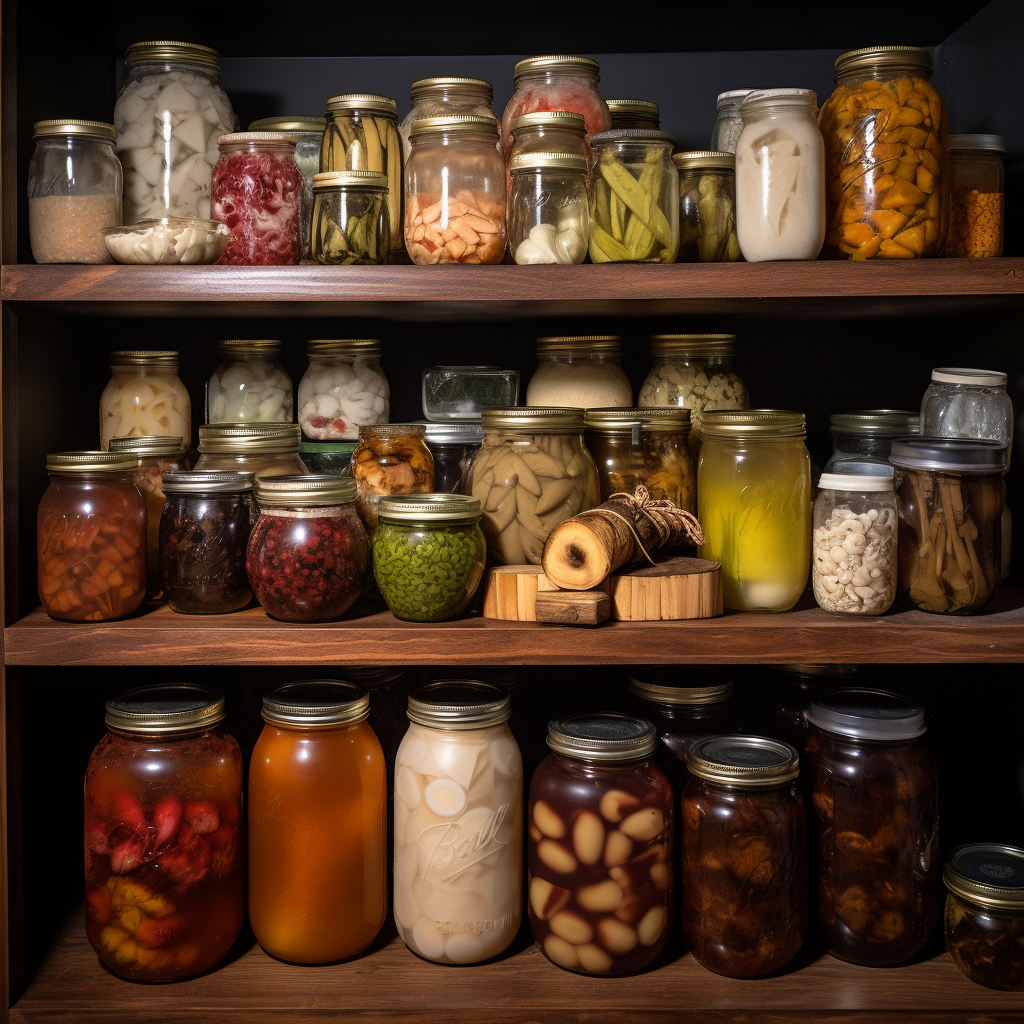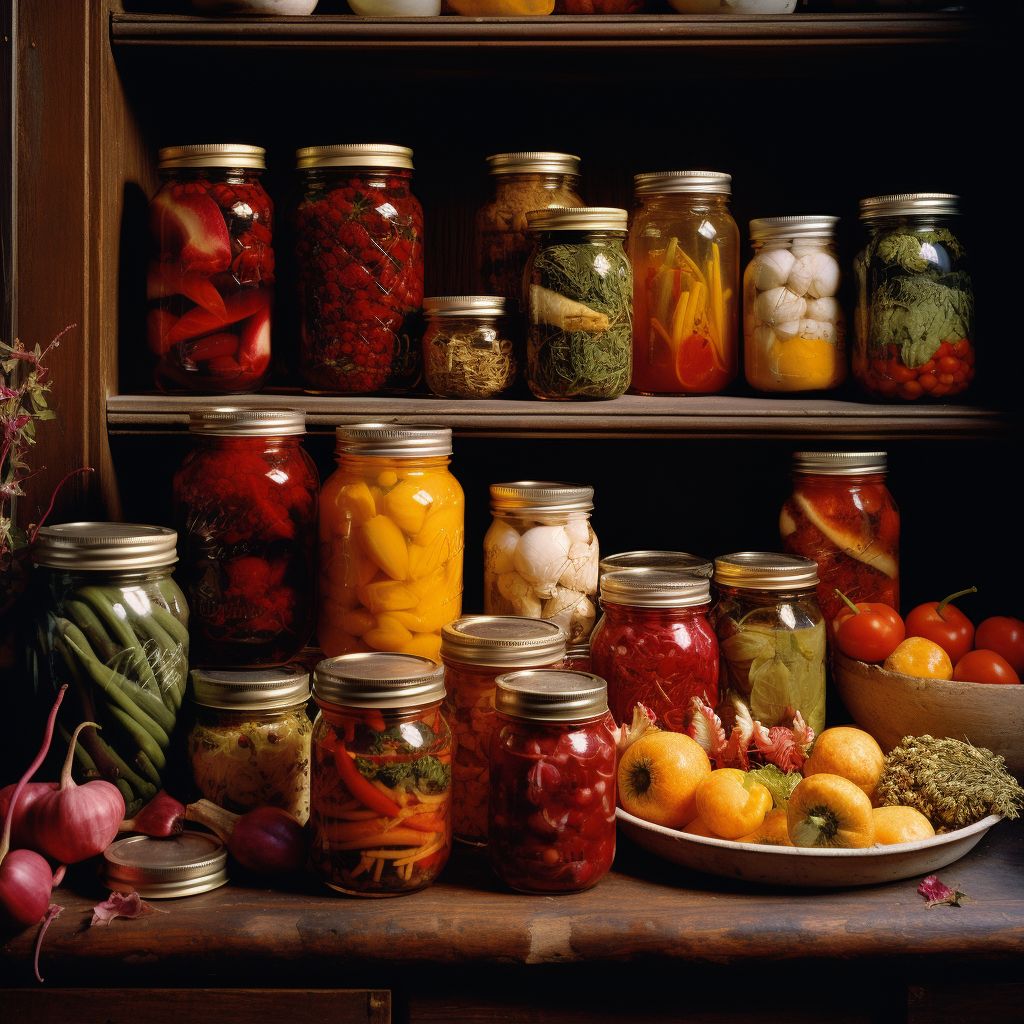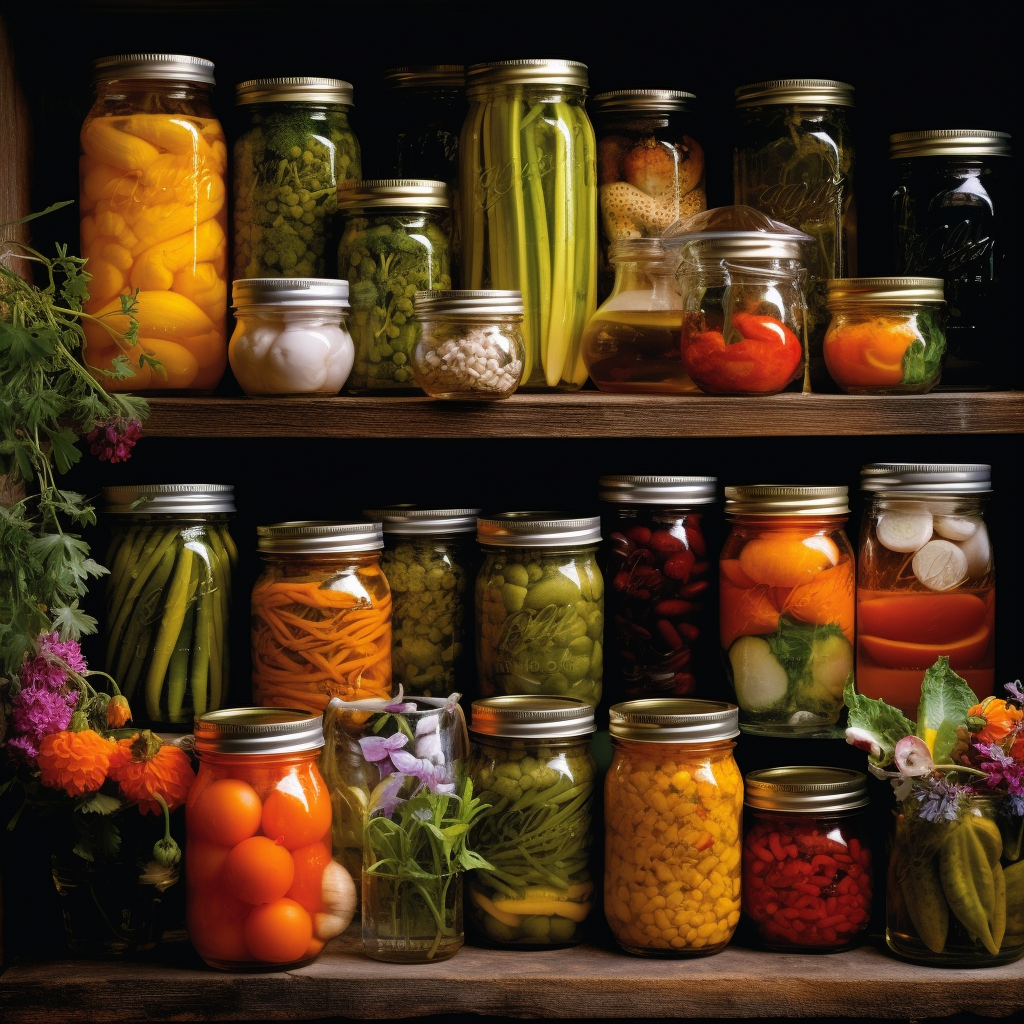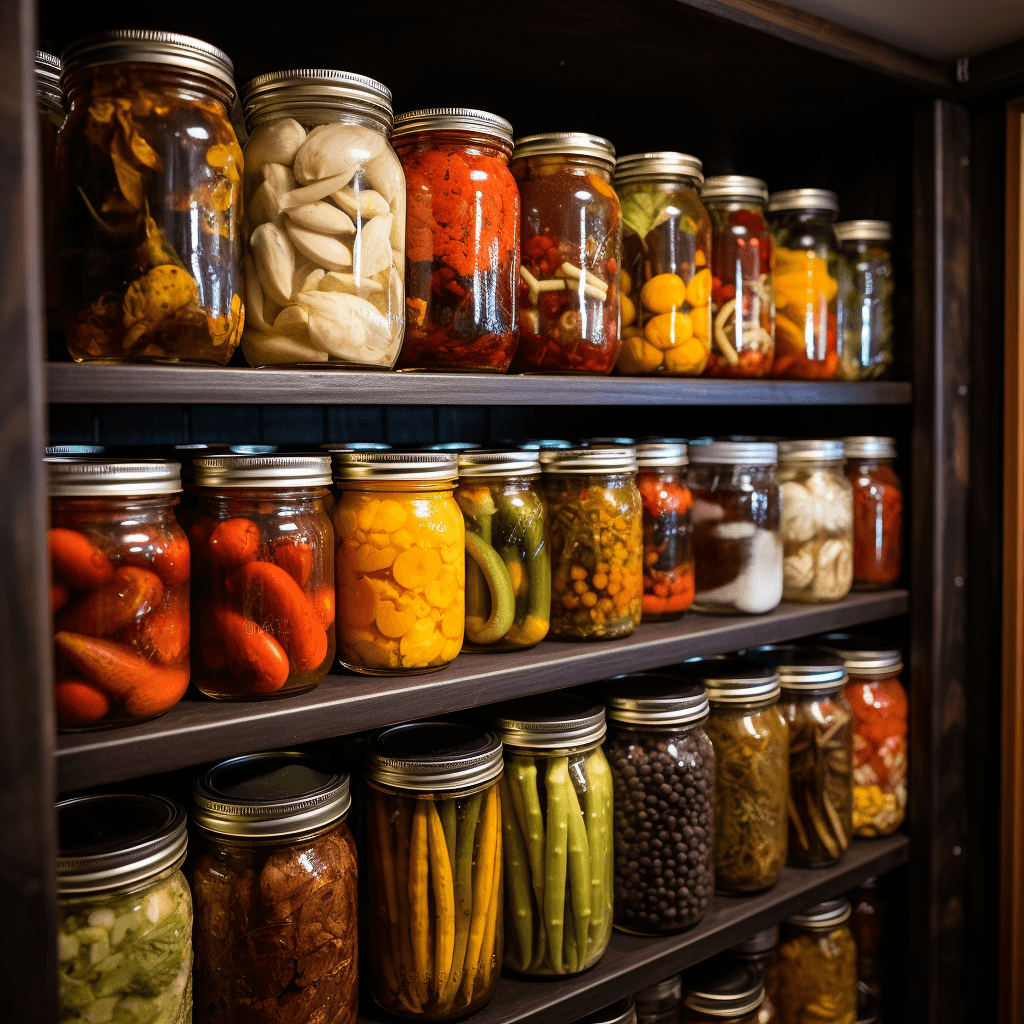Ever wondered how to preserve food for long-term storage? Whether you’re exploring off-grid living or simply want to be prepared for emergencies, knowing how to store food for an extended period of time is a valuable skill. In this article, we’ll discuss various methods and techniques that can help you preserve food for years to come. From canning to dehydrating and freezing, you’ll learn the different options available and how to choose the right one for your needs.
Canning is a popular method for long-term food storage. By placing food in jars and sealing them in a high-temperature environment, you can kill off any bacteria or microorganisms that may cause spoilage. This allows you to safely store canned goods for years, ensuring you have a steady food supply even during uncertain times. We’ll delve into the canning process and share helpful tips to maximize the shelf life of your canned foods.
Dehydrating is another effective way to preserve food for long-term storage. By removing the moisture from fruits, vegetables, meats, and herbs, you can prevent the growth of bacteria and fungi. Dehydrated foods can last for years when stored properly, and they’re also lightweight and easy to transport. If you’re interested in learning more about dehydrating food and the different methods involved, keep reading our upcoming article on this topic.
In addition to canning and dehydrating, freezing is a common method for preserving food. Freezing not only extends the shelf life of perishable items but also helps to retain their nutritional value and flavor. However, proper packaging is crucial to prevent freezer burn and maintain the quality of the food. Find out more about the dos and don’ts of freezing food for long-term storage in our comprehensive guide, where we’ll provide you with the necessary steps to ensure success. So, whether you’re planning for self-sufficiency or want to be prepared for unforeseen circumstances, stay tuned for our upcoming article on how to preserve food for long-term storage.
How to Preserve Food for Long-Term Storage
Preserving food for long-term storage is a crucial aspect of off-grid living. Whether you’re living in a remote location with limited access to grocery stores or simply want to ensure food security in case of emergencies, knowing how to preserve food can be a valuable skill. In addition to ensuring food security, long-term food preservation also helps reduce food waste and can save you money in the long run. In this article, we will explore the various methods and factors to consider when preserving food for extended periods.
Ensuring Food Security
Food security is a top priority, especially when living off the grid. Long-term food preservation allows you to have a sufficient supply of food even when faced with limited access to grocery stores. By preserving your own food, you can maintain a stockpile of essentials that can sustain you during times of scarcity or during emergencies. Furthermore, preserving food for long-term storage gives you control over the quality and safety of the food you consume.
Reducing Food Waste
Food waste is a global issue that contributes to environmental pollution and resource wastage. Preserving food for long-term storage can play a significant role in reducing food waste. By preserving excess produce from your garden or purchasing items in bulk when they are in season, you can prevent food from going to waste. Additionally, you can preserve leftover meals or perishable items before they spoil, extending their shelf life and reducing the amount of food that ends up in the trash.
Saving Money
Preserving food for long-term storage can also help you save money in the long run. By taking advantage of seasonal fruits and vegetables and preserving them in abundance, you can reduce your reliance on expensive store-bought produce. Additionally, with an established stockpile of preserved food, you can avoid purchasing food at inflated prices during times of scarcity. Long-term food preservation allows you to take advantage of sales and discounts, buying in bulk when prices are lower and preserving the excess for future use.

Factors to Consider for Long-Term Food Preservation
When it comes to long-term food preservation, several factors need to be considered to ensure the effectiveness and safety of the process. These factors include the type of food, storage conditions, and packaging and sealing methods.
Type of Food
Different preservation methods are suitable for different types of food. Fresh fruits and vegetables can be canned, frozen, or dehydrated. Meats can be canned or frozen, while pickling and fermenting are great options for vegetables. It is important to understand the best preservation method for each type of food to ensure optimum quality and longevity.
Storage Conditions
Proper storage conditions are crucial for maintaining the quality and safety of preserved food. Temperature and humidity control play a significant role in preventing the growth of bacteria and mold that can spoil the food. Dark and cool areas with low humidity are ideal for long-term food storage. It is important to avoid exposure to light and air, as they can contribute to spoilage and degradation of the food quality.
Packaging and Sealing
Packaging and sealing methods are essential for preserving food for an extended period. Air-tight, moisture-resistant containers or packaging materials are necessary to prevent the growth of bacteria and other microorganisms. Vacuum sealing, canning jars, and mylar bags are popular choices for long-term food storage. Labels should be added to containers or packages to identify the contents and the date of preservation to maintain a proper rotation and ensure freshness.
Methods of Preserving Food for Long-Term Storage
Various methods can be employed to preserve food for long-term storage. Some of the most common methods include canning, freezing, dehydrating, pickling, and fermenting. Let’s explore each of these methods in detail.
Canning
Canning involves heat processing food in jars to create a seal, preventing the growth of bacteria. Water bath canning and pressure canning are the two primary methods of canning.
Water Bath Canning
Water bath canning is suitable for high-acid foods such as fruits, pickles, and jams. The process involves immersing the jars in boiling water and allowing them to process for a specified amount of time.
Pressure Canning
Pressure canning is recommended for low-acid foods such as vegetables, meat, and soup. The process involves using a pressure canner to reach high temperatures, eliminating any bacteria or microorganisms that can cause spoilage.
Steps for Proper Canning
To ensure safe and effective canning, follow these steps:
- Gather the necessary equipment, including canning jars, lids, bands, and a pressure canner or a water bath canner.
- Prepare the food by washing, peeling, and cutting it into appropriate sizes.
- Fill the jars with the prepared food, leaving the necessary headspace as specified in the recipe.
- Apply the lids and bands, ensuring they are tightened appropriately.
- Process the jars in a pressure canner or a water bath canner according to the specific recipe and recommended processing time.
- Allow the jars to cool after processing, check for proper seals, and label them accordingly.
Recommended Foods for Canning
Some foods that are well-suited for canning include tomatoes, fruits, pickles, salsa, jams, jellies, and soups. It is important to follow tested recipes and guidelines to ensure food safety during the canning process.
Freezing
Freezing is a popular method for preserving a wide range of food items. It involves reducing the temperature to below freezing, which slows down the growth of bacteria, yeast, and mold.
Suitable Foods for Freezing
Many types of food can be successfully frozen, including fruits, vegetables, meat, poultry, fish, baked goods, and prepared meals. However, not all foods are suitable for freezing, as some may experience texture or flavor changes. It is important to consider the characteristics of the food and its intended use before freezing.
Blanching Process
Before freezing fruits and vegetables, blanching is often recommended. Blanching involves briefly boiling the produce and then rapidly cooling it in ice water. This process helps retain the color, texture, and nutrients of the food.
Packaging and Labeling
Proper packaging is essential for preventing freezer burn and maintaining the quality of the food. Use airtight containers, freezer bags, or vacuum-sealed bags to prevent moisture loss and freezer burn. Label each package with the contents and date to ensure proper rotation.
Freezing Tips
To ensure successful freezing, keep the following tips in mind:
- Freeze food at its peak quality.
- Cool food completely before freezing.
- Freeze food in small portions for easy thawing.
- Avoid overcrowding the freezer to allow proper airflow.
- Use a freezer thermometer to maintain the temperature at 0°F (-18°C) or below.
Dehydrating
Dehydrating, or drying, removes the moisture from food to inhibit the growth of bacteria, yeast, and mold.
Dehydrating Methods
Dehydrating can be done using an oven, a dehydrator, or by air-drying in certain conditions. Each method requires the food to be spread out in a thin layer to ensure even drying.
Best Fruits and Vegetables for Dehydration
Some fruits and vegetables that are especially well-suited for dehydration include apples, bananas, tomatoes, mushrooms, and herbs. These foods dehydrate well and can be stored for long periods.
Storing and Using Dehydrated Food
Dehydrated food should be stored in airtight containers, away from light and moisture. Properly stored dehydrated food can last for several years. To use dehydrated food, simply soak or rehydrate it in liquid before cooking or consume it as is for a healthy and convenient snack.

Pickling
Pickling is a preservation method that involves submerging food in a brine or an acidic solution, creating an environment that inhibits the growth of bacteria.
Types of Pickling
There are two main types of pickling: vinegar-based pickling and lacto-fermented pickling. Vinegar-based pickling involves submerging the food in a vinegar solution, while lacto-fermented pickling relies on the natural fermentation process.
Selecting Vegetables for Pickling
Several vegetables are well-suited for pickling, including cucumbers, carrots, radishes, and peppers. It is important to choose fresh, firm vegetables for optimal results.
Proper Pickling Techniques
To pickle vegetables, follow these steps:
- Prepare the brine solution by combining water, vinegar, salt, and any desired herbs or spices.
- Prepare the vegetables by washing, trimming, and slicing them to the desired thickness.
- Place the vegetables in sterilized jars and pour the brine solution over them, ensuring they are fully submerged.
- Seal the jars and store them in a cool, dark place for the recommended pickling time.
- After pickling, store the jars in the refrigerator for increased shelf life.
Fermenting
Fermentation is a traditional method of food preservation that harnesses the power of beneficial bacteria. During fermentation, the natural sugars in the food are converted into acids or alcohol.
Fermentation Process
To ferment food, follow these steps:
- Prepare the food by washing, chopping, and salting it as necessary.
- Place the food in a fermentation container, ensuring it is fully submerged in its own juices or brine.
- Cover the container with a lid or a cloth to allow gas to escape while preventing contaminants from entering.
- Store the container in a dark, room temperature environment and let the fermentation process occur over several days to several months, depending on the food.
Fermentation Containers
Fermentation can be done in a variety of containers, including ceramic crocks, glass jars, or specially designed fermentation jars. The container should be non-reactive and have an airtight seal to prevent oxidation.
Popular Foods for Fermentation
Some popular foods that can be fermented include sauerkraut, kimchi, pickles, kombucha, and sourdough bread. Fermented foods add a unique flavor and texture to dishes and have the added benefit of probiotics, which are beneficial for gut health.

Storage Conditions for Long-Term Food Preservation
To ensure the longevity and quality of preserved food, proper storage conditions are crucial.
Temperature and Humidity Control
Storing preserved food in a cool, dry place is essential for preventing spoilage. Temperature control is especially important for canned goods and dehydrated foods, as higher temperatures can result in spoilage or degradation of quality.
Avoiding Exposure to Light and Air
Exposure to light and air can lead to the degradation of nutrients and the formation of bacteria. Store preserved food in opaque containers or in a dark pantry to protect it from light. Additionally, properly seal containers to prevent the entry of air, which can cause spoilage.
Ideal Storage Locations
Ideal storage locations include cool, dark areas such as a basement, root cellar, or a cool pantry. Avoid areas prone to temperature fluctuations or excessive moisture, as these can shorten the shelf life of preserved food.
Conclusion
Long-term food preservation is essential for ensuring food security, reducing waste, and saving money. By considering factors such as the type of food, storage conditions, and appropriate preservation methods like canning, freezing, dehydrating, pickling, and fermenting, you can effectively preserve food for extended periods. Keeping in mind the necessary storage conditions and understanding the various preservation techniques will help you maintain the quality and safety of your stored food. With the knowledge and skills to preserve food for long-term storage, you can confidently navigate the challenges of off-grid living or emergencies, ensuring a continuous supply of nourishing food for you and your loved ones.




